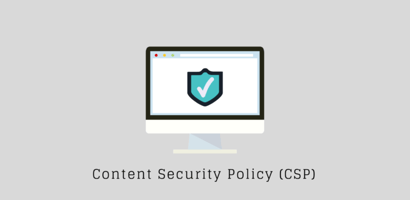In today's digital landscape, where milliseconds can determine success or failure, finding the...
Security Measures for Video Streaming CDNs
To address the evolving landscape of video streaming Content Delivery Networks (CDNs) in 2024, it is crucial to integrate best practices and innovations focused on security measures. Drawing insights from the latest industry discussions and expert recommendations, the following compilation outlines key strategies for enhancing CDN security, catering to both technological advancements and the prevalent concerns discussed across technical forums.
Optimizing CDN Security for Media Delivery
Future Trends in CDN Security
The integration of emerging technologies such as 5G and edge computing poses new security challenges but also offers opportunities to enhance CDN security through faster threat detection and mitigation. Additionally, compliance with evolving data privacy laws requires CDNs to adapt their security measures to meet stringent regulatory standards.
Collaboration among CDN providers, ISPs, and other stakeholders is essential for sharing knowledge and best practices, leading to more effective security measures and strategies. This collaborative approach ensures that CDN security evolves in tandem with the changing threat landscape, providing a secure and reliable media delivery platform.
In summary, optimizing CDN security in 2024 requires a multifaceted approach that includes technological advancements, compliance with regulatory standards, and collaborative efforts within the industry. By addressing specific security concerns, integrating advanced security features, and staying ahead of future trends, CDNs can ensure the secure and efficient delivery of video content to a global audience.
This compilation integrates insights from industry-leading sources such as CacheFly and StreamingVideoProvider, which discuss various aspects of CDN security, from optimization strategies to the impact of emerging technologies and the importance of regulatory compliance.
Optimizing CDN Security for Media Delivery
- Cache Hit Ratio Optimization
Optimizing the cache hit ratio is paramount for enhancing CDN performance while concurrently reducing the risk of data breaches. A higher cache hit ratio means more requests are served directly from the CDN's cache, minimizing the load on the origin server and reducing exposure to potential security threats. - Blocking Access to Malicious Content
CDNs are instrumental in filtering out malicious content, leveraging threat intelligence feeds, signatures, and heuristics to block access to malware, phishing sites, and known malicious files. This proactive content filtering ensures a safer user experience by mitigating the risk of cyber threats. - Security Integration
Integrating advanced security features such as authenticated URLs and signed cookies adds an extra layer of protection, ensuring that content access is limited to authorized users. This integration is essential for safeguarding against unauthorized content access and piracy. - Encryption and Securing Streaming Endpoints
Encryption is a cornerstone of CDN security, ensuring that media content remains secure during transit by making it unreadable to unauthorized users. Additionally, securing streaming endpoints against unauthorized access and potential data breaches is critical for maintaining the integrity of media content delivery. - Advanced Security Features
Incorporating advanced security features like bot mitigation, geo-blocking, and IP whitelisting further bolsters CDN security. These features help prevent botnet attacks, restrict content access based on geographical location, and ensure access is limited to trusted users. - Real-Time Threat Detection and AI Integration
Leveraging real-time analytics and AI for threat detection allows CDNs to identify and mitigate threats as they occur. AI and machine learning technologies analyze vast data sets to predict and prevent security threats, playing a crucial role in the proactive management of CDN security.
Future Trends in CDN Security
The integration of emerging technologies such as 5G and edge computing poses new security challenges but also offers opportunities to enhance CDN security through faster threat detection and mitigation. Additionally, compliance with evolving data privacy laws requires CDNs to adapt their security measures to meet stringent regulatory standards.
Collaboration among CDN providers, ISPs, and other stakeholders is essential for sharing knowledge and best practices, leading to more effective security measures and strategies. This collaborative approach ensures that CDN security evolves in tandem with the changing threat landscape, providing a secure and reliable media delivery platform.
In summary, optimizing CDN security in 2024 requires a multifaceted approach that includes technological advancements, compliance with regulatory standards, and collaborative efforts within the industry. By addressing specific security concerns, integrating advanced security features, and staying ahead of future trends, CDNs can ensure the secure and efficient delivery of video content to a global audience.
This compilation integrates insights from industry-leading sources such as CacheFly and StreamingVideoProvider, which discuss various aspects of CDN security, from optimization strategies to the impact of emerging technologies and the importance of regulatory compliance.


